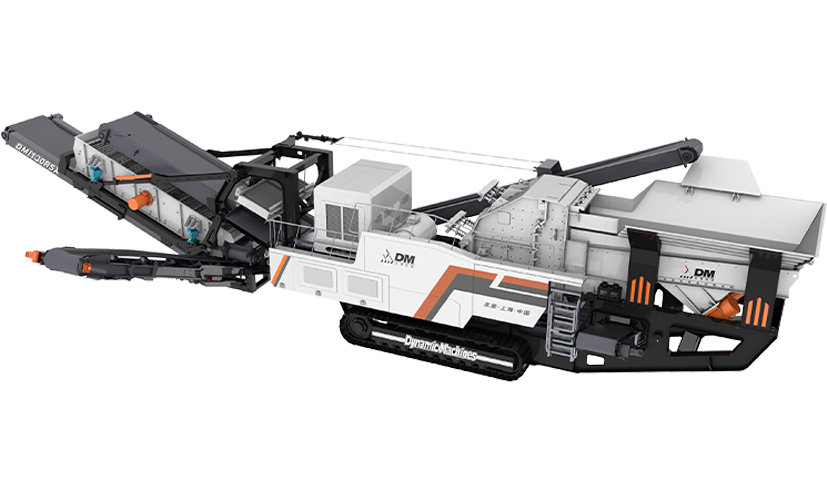Machinery Weight 55-72t
Max Feeding size(mm) ≤700mm
Hopper Volume(m³) /
The Impact Hammer Crusher Factory is a critical entity in the mining and quarrying industry, tasked with the responsibility of converting raw materials into smaller, usable forms. To remain competitive and meet market demands, these factories must constantly strive to improve their crushing efficiency. This article explores the various strategies that can be employed to enhance the performance of an Impact Hammer Crusher Factory and ensure that it operates at good efficiency.

One of the key factors in increasing the efficiency of an Impact Hammer Crusher Factory is the regular maintenance and optimization of the crushing equipment. Regular inspections and timely replacement of worn-out parts, such as hammers and bearings, can significantly reduce downtime and improve the lifespan of the crushers. By maintaining the equipment in suitable condition, the factory can ensure that the crushers are operating at capacity, thus increasing the overall crushing efficiency.
Another critical aspect of improving crushing efficiency in an Impact Hammer Crusher Factory is the selection and management of the feed material. The factory must ensure that the material being fed into the crushers is of consistent size and composition. Over-sized rocks or materials with excessive moisture content can cause reduced efficiency and potential damage to the crushers. By implementing proper screening and drying processes, the factory can optimize the feed material, thereby enhancing the crushing process.
The design and layout of the Impact Hammer Crusher Factory also play a significant role in determining its efficiency. A well-designed factory will have a streamlined process flow that reduces material handling and transportation times. This not only reduces the risk of material degradation but also increases the overall throughput of the factory. Additionally, the layout should allow for easy access to all machinery for maintenance and repair purposes, further enhancing the efficiency of the operation.
Investing in advanced technology can also be a game-changer for an Impact Hammer Crusher Factory. Modern crushers are equipped with sensors and monitoring systems that provide real-time data on the operation of the equipment. This data can be used to identify inefficiencies and areas for improvement, allowing the factory to make informed decisions and adjustments. Moreover, the use of automation and computer-controlled systems can help to optimize the crushing process, causing higher efficiency and reduced labor costs.
Training and development of the workforce is another area where an Impact Hammer Crusher Factory can focus its efforts to improve crushing efficiency. Well-trained operators are more likely to follow practices and operate the machinery safely and effectively. Regular training sessions and workshops can help to keep the workforce updated on crushing techniques and technologies, ensuring that they are equipped to handle any challenges that may arise.
Environmental considerations should not be overlooked in the quest for increased efficiency in an Impact Hammer Crusher Factory. The factory must adhere to strict environmental regulations and work towards reducing its carbon footprint. This can be achieved through energy-efficient machinery, recycling of waste materials, and the implementation of green technologies. By doing so, the factory not only contributes to a sustainable environment but may also benefit from reduced energy costs and improved public perception.
In conclusion, the journey towards enhancing the crushing efficiency of an Impact Hammer Crusher Factory is a multifaceted one, involving regular maintenance, optimized feed material management, strategic factory layout, adoption of advanced technology, workforce training, and environmental stewardship. By focusing on these areas, an Impact Hammer Crusher Factory can significantly improve its crushing efficiency, ensuring its competitiveness in the global market and contributing to the overall success of the industry.
Machinery Weight 53-62t
Max Feeding size(mm) ≤600mm
Hopper Volume(m³) 80-360t/h
Machinery Weight 55-57t
Max Feeding size(mm) ≤215mm
Hopper Volume(m³) /
Machinery Weight 33-35t
Max Feeding size(mm) 150-400t/h
Hopper Volume(m³) 2.5
Machinery Weight 33t
Max Feeding size(mm) 150-400t/h
Hopper Volume(m³) 7m³
Machinery Weight 54-63t
Max Feeding size(mm) ≤600mm
Hopper Volume(m³) /
Machinery Weight 9.5-75t
Max Feeding size(mm) ≤1000mm
Hopper Volume(m³) 61-1204t/h
Just let we know what you want, and we will get in touch with you as soon as possible!